Bastogne War Museum, Belgium — a Must See for People Interested in World War II
© 2014 Peter Free
01 December 2014

The Bastogne War Museum is impressive
Audio story-telling and two theater-like multimedia dioramas integrate a variety of World War II exhibits into a memorable experience.
The War Museum is adjacent to the Mémorial du Mardasson, which is one of the most architecturally appealing monuments I have seen.
Note
Not too far away from these are the Luxembourg American Cemetery and Memorial at Hamm and the German War Cemetery at Sandweiler.
What sets this museum apart
The Museum tells its story, via audio, with perspectives taken from two soldiers and two Belgian civilians:
Robert Keane (a corporal in the US 101st Airborne Division),
Hans Wegmüller (a lieutenant in the German 26th Volksgrenadier Division),
Mathilde Devillers (a young teacher from Bastogne)
and
Emilie Mostade (a 13-year old schoolchild) each explain . . . what the terrible years of the war were like for them.
© 2014 Bastogne War Museum, Living Memory of the Ardennes, Press Kit - BastogneWarMuseum.be (2014)
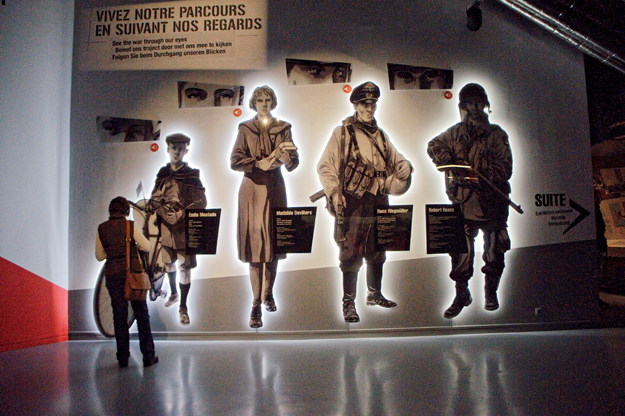
How the audio works
Museum visitors wear the equivalent of non-contact earbuds issued at the front desk.
Appropriate segments of the story automatically turn on (and off) when one enters (and leaves) the pertinent area. In between are audiovisual displays that one can activate by pushing a button on the wall. These video clips focus on related material that the four narrators do not know.
For example, one of these stops consists of edits take from past interviews with members of the Belgian resistance. The dangers they faced are apparent in just a few French and English-subtitled words.

Exhibits
Exhibits run the gamut of personal items through weapons to mannequins wearing authentic uniforms. Large poster boards explain context, where necessary.

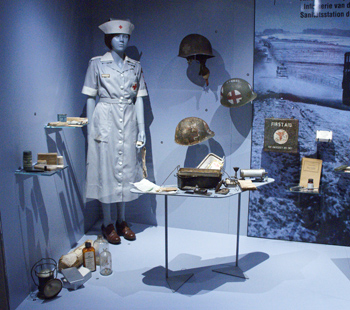
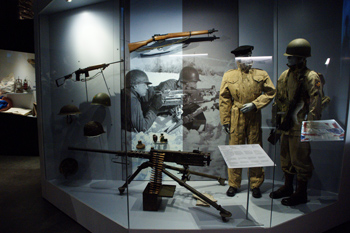
Poignant are helmets showing holes left by the bullets or shrapnel that killed the wearer. For example, from 05 July 1944, Second Lieutenant William C. Aubel’s helmet and helmet liner:
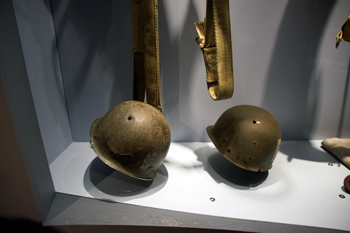
A simulated graveyard shows slideshows of each real person’s life:
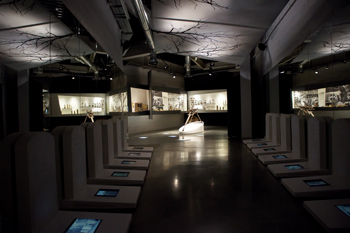
A clever set of German over-boots made of straw:
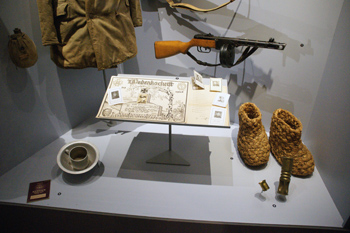
The Museum includes three tanks and Jeep. One of the tanks has fatal holes:
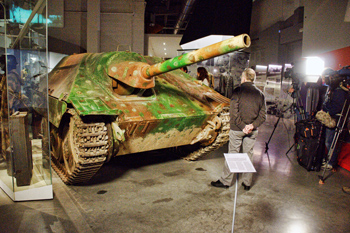
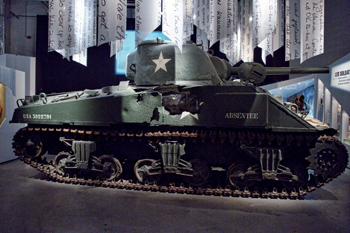
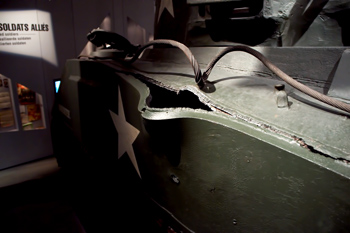
An American Maxson 50 caliber gun turret:
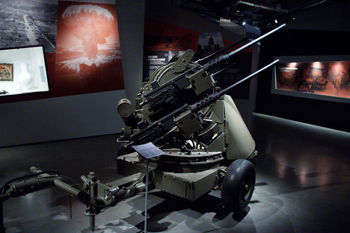
And much more.
Dioramas
The Museum’s two multimedia dioramas are unique:
The first sits the audience down in a simulated Ardennes forest night during the winter 1944-1945. Multi-media presentations take place on screens hidden in the trees. Muzzle flashes simulate machine guns. Planes and clouds can intermittently be seen overhead. Though the artwork on some of the illuminated panels is crude, their story-telling is not.

The second diorama simulates a Bastogne cafe. It is woven into the story, when American Corporal Robert Keane has to escort captured German Lieutenant Hans Wegmüller to the rear, as a prisoner of war. The men take refuge inside the cafe during a bombardment. The audience learns details about the battle and the locals’ lives, including having to hide in the basement for days.
“Never again” is the implied theme
World War II’s suffering is everywhere apparent in these displays. The Holocaust looms as an encompassing and impenetrable fog.
Anti-German feeling, however, seems to be absent in this Belgian museum, even though Germany overran the country twice in the 20th Century.
Toward the end of the cafe diorama presentation, the Museum’s designers, probably aware of their even-handed slant, subtly insert mention of representative German atrocities on their soil.
Forgiveness there may be. Forgetfulness, not yet.
Chill evening falls, as we leave. Moon and stone are silent. Trees, grass anchor the present.
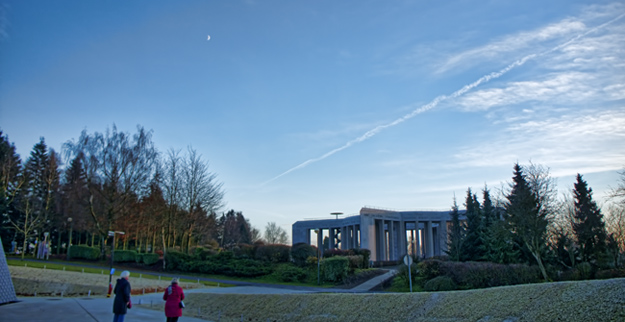
 PeteFree.com
PeteFree.com